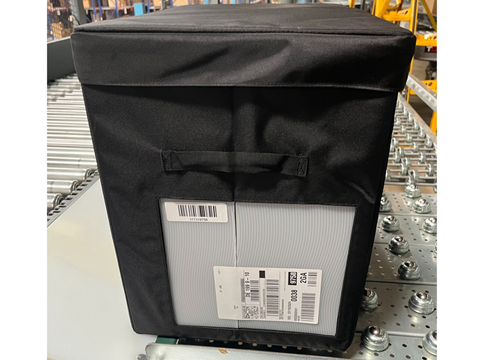
Returnity has adapted its reusable shipping box solution to work with various distribution line setups in retail and e-commerce, aiming to meet the challenges of varying production lines, labelling systems and automation technologies.
Returnity says The Last Box is a reusable packaging solution with a collapsible nesting design for storage and returns, designed to reduce retailers’ packaging costs and the cardboard waste generated by the retail and e-commerce industries.
The company says that despite the challenges posed by varying production lines, labeling systems, and automation technologies, it has developed The Last Box to be highly adaptable, aiming to meet the needs of both suppliers and retailers.
It is reportedly ‘the first in the industry’ to offer advanced adaptability through the Box’s integration with robotic and automated processes. Returnity states that it recently successfully reformatted The Last Box to comply with automated labelling requirements, in collaboration with a ‘leading retailer’.
Mike Newman, CEO of Returnity, says: “To improve change management and accessibility, we’ve designed a new version of The Last Box to be fully compatible with most existing scanning, labelling, and AI technologies, ensuring it integrates seamlessly into any logistics setup.”
Newman adds: “By making adoption as easy as possible, we enable businesses to look towards a more sustainable future. The Last Box can cut packaging costs by 30% per cycle and reduce carbon emissions by up to 88%, significantly advancing ESG goals and other sustainable supply chain initiatives.”
In May, the company introduced its In Rotation return system, aiming to maximize the lifespan of reusable shopping bags and allow consumers to return extra reusables for further use. The system provides consumers with a prepaid mailer to return excess grocery store totes and bags after use.
The following month, Interzero teamed up with German startup hey circle to utilize its reusable shipping boxes, hoping to reduce waste and save CO2 emissions in package shipping. The boxes are designed for 50 cycles, tested for a stacking pressure of 150 kg, and can be loaded with up to 12 and 15 kg respectively.
If you liked this story, you might also enjoy:
How are the top brands progressing on packaging sustainability?
Sustainable Innovation Report 2024: Current trends and future priorities
Reuse vs. single use – which is better for the environment?
The ultimate guide to global plastic sustainability regulation










No comments yet